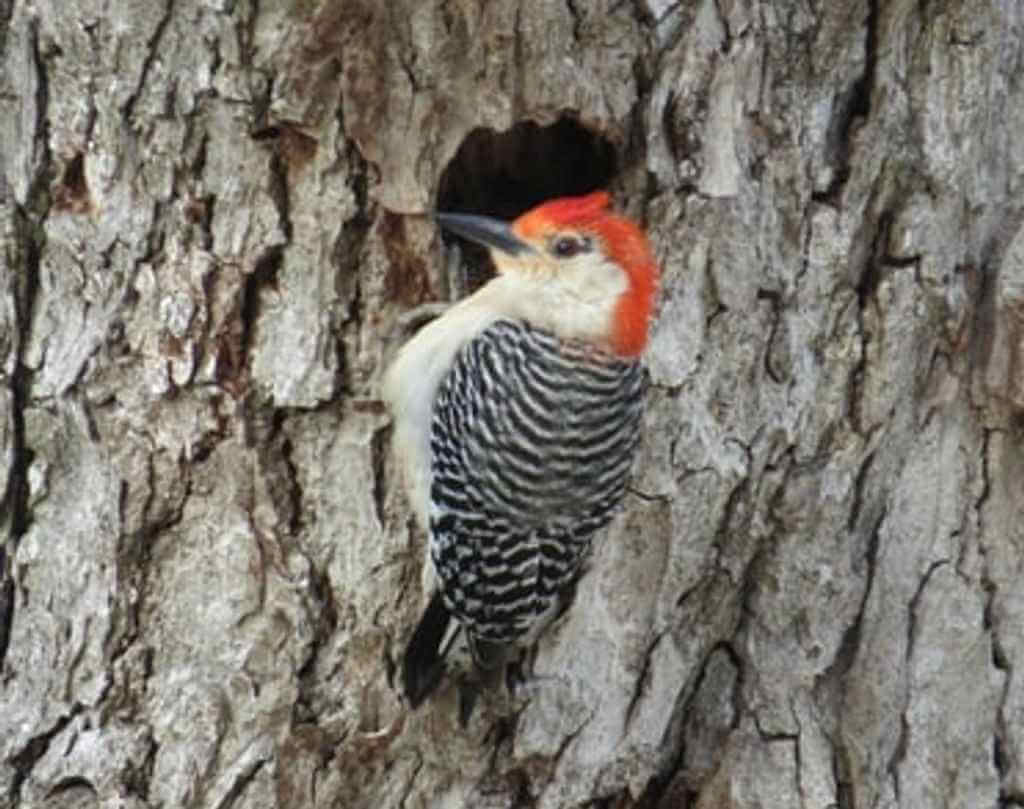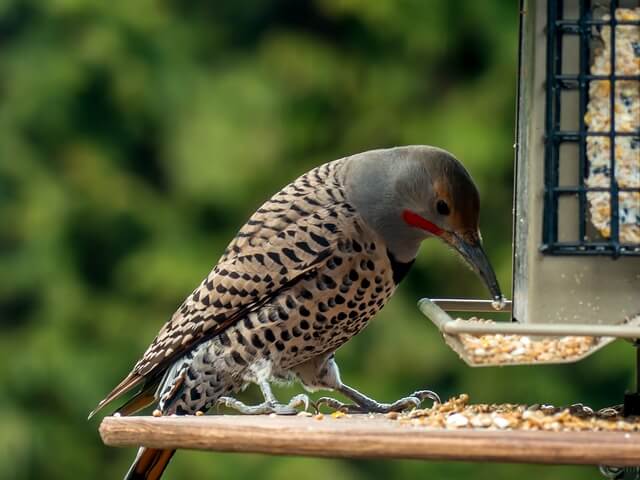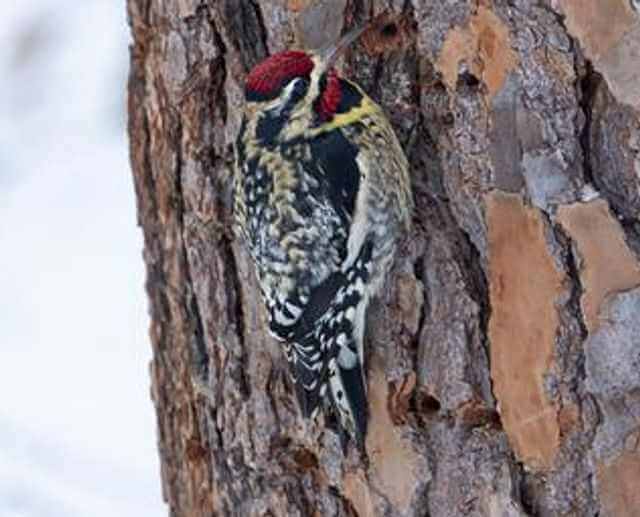Pennsylvania is home to a diverse range of woodpecker species, each with its own unique characteristics and behaviors. In this comprehensive guide, we’ll explore the top 10 types of woodpeckers found in Pennsylvania, providing valuable insights into their habitats, diets, and distinctive features.
Whether you’re a seasoned birder or just starting out, this guide will enhance your appreciation for these fascinating birds and help you identify them with confidence.
Types of Woodpeckers in Pennsylvania
Downy Woodpecker
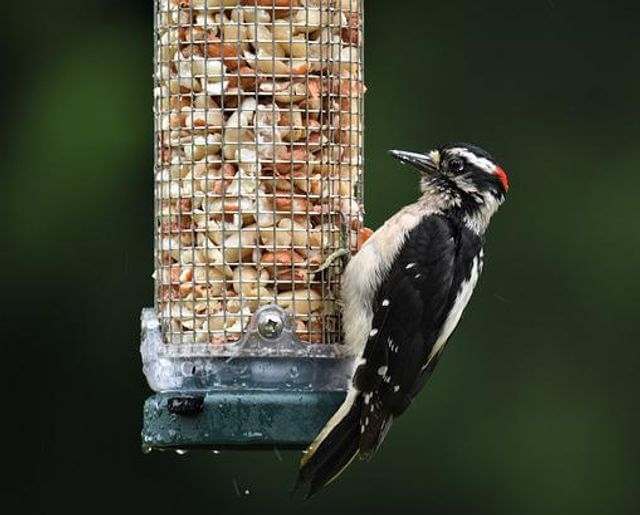
- Length: 5.5-6.7 in (14-17 cm)
- Weight: 0.7-1.0 oz. (21-28 g)
- Wingspan: 9.8-11.8 in (25-30 cm)
- Scientific Name: Picoides pubescens
- Frequency of Occurrence: 34.27% (Statistic by: eBird)
- Where To Find Them: Downy Woodpeckers can be found in many areas of Pennsylvania. Some locations include the forests in the Pocono Mountains, the hemlock and hardwood forests in the Allegheny National Forest, and the oak, hickory, and pine forests in the Endless Mountains.
- How to Attract: The downy woodpecker can be easily attracted to backyard birdfeeders by offering a variety of foods. They especially love black oil sunflower seeds, but will also eat niger thistle, millet, and cracked corn. They are also attracted to suet feeders, where they can peck at the soft suet or use their strong bills to pry off small pieces. In order to keep Downy Woodpeckers coming back to your yard, you should continue to provide a variety of food sources throughout the year.
Description: The Downy Woodpecker is a small North American bird that ranges throughout most of the continent. Downy Woodpeckers prefer deciduous forests, but can be found in other habitats, including parks and gardens. These birds feed mainly on insects, although they will also eat fruit and seeds.
Downy Woodpeckers nest in tree cavities, often using abandoned nests of other birds. Females lay 3-6 eggs and incubate them for about two weeks. Young Downy Woodpeckers fledge after about two months.
Related Post:
- How to Attract Downy Woodpeckers to Your Yard? (Easy!)
- 7 Birds That Look Like Downy Woodpecker (Explained)
Red-bellied Woodpecker
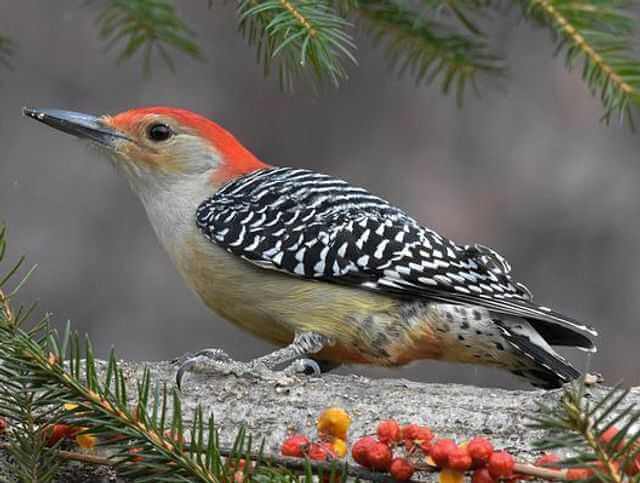
- Length: 9.5 in (24 cm)
- Weight: 2.0-3.2 oz. (56-90 g)
- Wingspan: 13.0-16.5 in (33-42 cm)
- Scientific Name: Melanerpes carolinus
- Frequency of Occurrence: 34.12%
- Where To Find Them: They can be found in most parts of the state, but they are most common in the eastern and central parts. Some good locations to look for them include the Allegheny National Forest, Loyalsock State Forest, and Ricketts Glen State Park.
- How to Attract: Red-bellied woodpeckers are common in North America and can be found in a variety of habitats. They often visit backyards, where they can be attracted to feeders that offer suet or sunflower seeds. Properly placing a bird feeder in your yard and keeping it clean will help attract these birds. You can also provide trees or large shrubs that offer natural nesting sites and food sources.
Description: The Red-bellied woodpecker is a common woodpecker found in eastern and central North America. They range from southern Canada to Florida and west to Texas. They are usually found in deciduous forests, but can also be found in parks and suburbs.
The diet of the red-bellied woodpecker consists mainly of insects, but they will also eat fruit, nuts, and seeds. They nest in tree cavities, often using abandoned holes made by other animals.
Related Post: How to Attract Red-bellied Woodpeckers to your Yard?
Northern Flicker
- Length: 11.0-12.0 in (28-31 cm)
- Weight: 3.9-5.6 oz. (110-160 g)
- Wingspan: 16.5-20.0 in (42-51 cm)
- Scientific Name: Colaptes auratus
- Frequency of Occurrence: 20.75%
- Where To Find Them: In the east, they are found in the Pocono Mountains and along the Delaware River. In the central part of Pennsylvania, they are found in State College and around Lake Erie. In the west, they are found in Erie and Pittsburgh. The best time to see them is during the spring and fall when they migrate.
- How To Attract: They are easily attracted to feeders with suet or peanut butter, and they also like to eat insects. You can attract Northern Flickers to your yard by putting up a birdfeeder and placing a few logs or branches in your yard for them to perch on.
Description: The Northern Flicker is a medium-sized woodpecker that ranges throughout much of North America. They typically live in open woodlands, parks, and suburban areas. These birds mainly eat insects, but will also consume fruits and seeds.
Northern Flickers nest in holes in trees, often using abandoned woodpecker holes. They lay about six eggs per clutch. The chicks are altricial, or helpless at birth, and require extensive parental care.
Related Post: How to Attract Northern Flickers to your Backyard (Easy)
Hairy Woodpecker
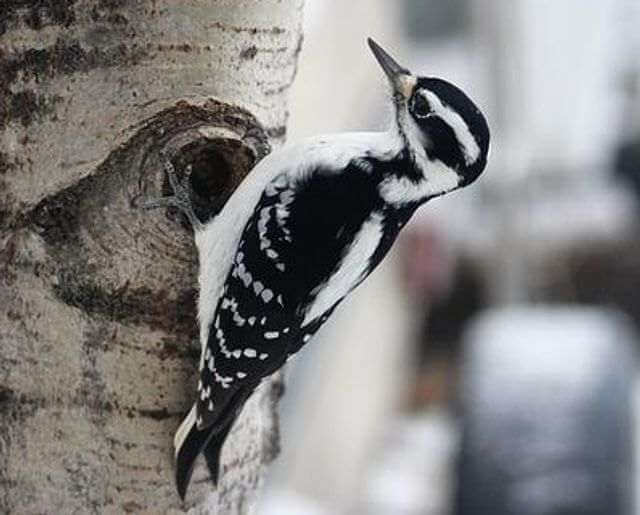
- Length: 7.1-10.2 in (18-26 cm)
- Weight: 1.4-3.4 oz. (40-95 g)
- Wingspan: 13.0-16.1 in (33-41 cm)
- Scientific Name: Picoides villosus
- Frequency of Occurrence: 12.31%
- Where To Find Them: Areas where they can be found include the Pocono Mountains, the Endless Mountains, and parts of the Laurel Highlands.
- How to Attract: These woodpeckers are attracted to dead or dying trees, where they feed on insects. If you want to attract these birds to your backyard, you can provide them with a dead tree or post, as well as a source of water. You can also put up a birdfeeder with suet or peanut butter to attract them.
Description: The Hairy Woodpecker is a medium-sized woodpecker that is found throughout North America. They typically live in forests near open areas, where they can find food. Their diet consists mostly of insects, but they will also eat fruit and nuts.
Hairy Woodpeckers build their nests in trees, often using abandoned holes made by other animals. They lay between 3 and 8 eggs, which are incubated by the female for about 2 weeks. The chicks stay in the nest for another 2 to 3 weeks after hatching.
Pileated Woodpecker
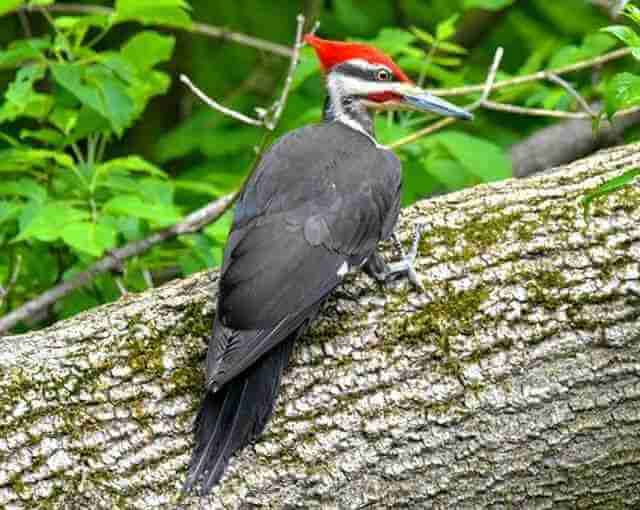
- Length: 15.8-19.3 in (40-49 cm)
- Weight: 8.8-12.3 oz. (250-350 g)
- Wingspan: 26.0-29.5 in (66-75 cm)
- Scientific Name: Dryocopus pileatus
- Frequency of Occurrence: 8.50%
- Where To Find Them: The best places to see them are in the Pocono Mountains and the Laurel Highlands.
- How To Attract: These birds can be attracted to your backyard by providing them with the right food and habitat. Pileated Woodpeckers prefer to eat insects, but will also eat fruit, nuts, and seeds. You can provide them with food by setting out a feeder filled with suet, peanuts, or sunflower seeds. Be sure to keep the feeder clean and refill it regularly. You can also attract Pileated Woodpeckers to your backyard by creating a bird-friendly habitat. This includes providing a variety of trees and branches for them to perch on, as well as dead trees or logs for them to excavate.
Description: The Pileated Woodpecker is the second largest woodpecker in North America, and the largest in eastern North America. The Pileated Woodpecker range extends from southeastern Alaska to Nova Scotia, south to Florida and west to Texas. They are found in moist forests and woodlands, as well as orchards, open fields, and suburbs.
The diet of the Pileated Woodpecker consists of insects, including ants, termites, beetle larvae, and caterpillars; as well as fruit and nuts. They forage on trees and utility poles for insects, and on the ground for fruits and nuts.
Related Post: How to Attract Pileated Woodpeckers to your Yard (Fast)
Yellow-bellied Sapsucker
- Length: 7.1-8.7 in (18-22 cm)
- Weight: 1.5-1.9 oz. (43-55 g)
- Wingspan: 13.4-15.8 in (34-40 cm)
- Scientific Name: Sphyrapicus varius
- Frequency of Occurrence: 3.53%
- Where To Find Them: There are several locations in Pennsylvania where you can find these birds, including Ricketts Glen State Park, Pinchot State Forest, and Bald Eagle State Forest.
- How to Attract: The best way to attract these birds is by putting up a suet feeder. They will also come to birdhouses if they are placed near trees. You can also attract them by putting out a dish of sap or water mixed with sugar.
Description: The yellow-bellied sapsucker is a medium-sized woodpecker that ranges throughout much of North America. They inhabit a variety of habitats, but are most commonly found in forests and wooded areas. They feed mainly on insects, but also consume fruit, sap, and nuts.
Yellow-bellied sapsuckers nest in tree cavities, often excavating their own homes. The female lays between 3 and 7 eggs, which the male incubates for about 2 weeks. The chicks fledge around 2 months old.
Related Post: 16 Interesting Sapsucker Facts Revealed!
Red-headed Woodpecker
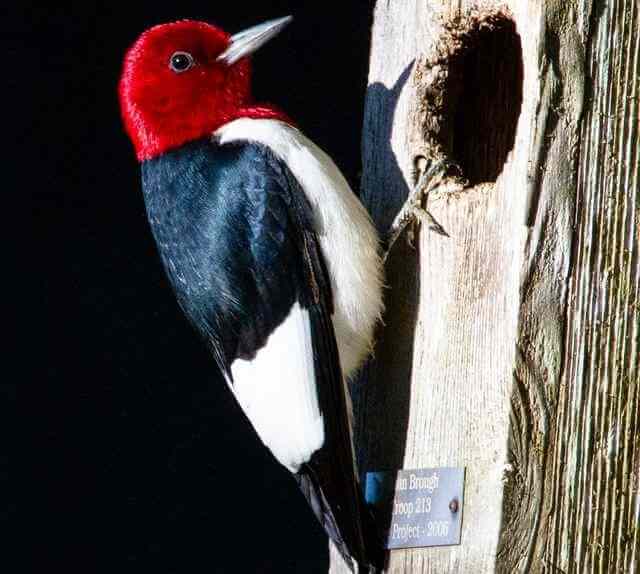
- Length: 7.5-9.1 in (19-23 cm)
- Weight: 2.0-3.2 oz. (56-91 g)
- Wingspan: 16.5 in (42 cm)
- Scientific Name: Melanerpes erythrocephalus
- Frequency of Occurrence: 0.8365%
- Where To Find Them: In Pennsylvania, these birds can be found in the Allegheny Plateau, the Ridge and Valley region, and the Appalachian Mountains.
- How to Attract: They are attracted to open areas with large trees, where they can find food and shelter. There are a few things you can do to make your property more attractive to these birds, and increase the chances of seeing them. One way to attract red-headed woodpeckers is to provide them with a source of water. A small pond or birdbath will do, as long as it is shallow and has some rocks or other features for the birds to perch on. You can also plant trees and shrubs that provide food for the birds, such as sumac, hackberry, and dogwood.
Description: The Red-headed woodpecker (Melanerpes erythrocephalus) is a medium-sized woodpecker that is found in North America. They are the most widespread woodpecker in the United States and can be found in a variety of habitats, including forests, parks, and even residential areas.
They are opportunistic feeders and will eat a variety of items, including insects, nuts, berries, and seeds. They build their nests in trees, typically using dead branches or tree cavities. Red-headed woodpeckers are monogamous, and both parents care for the young.
Related Post:
- Interesting Red-Headed Woodpecker Facts (Explained)
- Birds That Look Like A Red-headed Woodpecker(Explained)
Black-backed Woodpecker
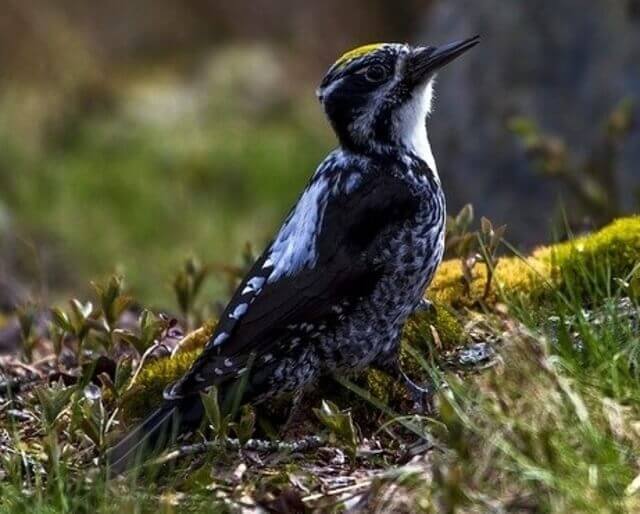
- Length: 9.1 in (23 cm)
- Weight: 2.1-3.1 oz. (61-88 g)
- Wingspan: 15.8-16.5 in (40-42 cm)
- Scientific Name: Picoides arcticus
- Frequency of Occurrence: 0.0007%
- Where To Find Them: The best places to look for black-backed woodpeckers are in the northern and western parts of the state, especially in the Allegheny and Pocono Mountains.
- How to Attract: If youwant to attract them to your backyard, there are a few things you can do. Black-backed woodpeckers prefer tall conifers for nesting and foraging. They also like dead trees and large limbs for foraging. To attract them to your backyard, provide a tall coniferous tree and plenty of dead trees or large limbs. You can also put up a feeder filled with suet or black oil sunflower seeds.
Description: The Black-backed woodpecker is a medium-sized woodpecker that is found in North America. The black-backed woodpecker’s range extends from Alaska to Newfoundland, and from California to the East Coast. The black-backed woodpecker inhabits a wide variety of habitats, including coniferous forests, deciduous forests, and open areas near woods.
The diet of the black-backed woodpecker consists mainly of insects, but the bird will also consume fruits, nuts, and sometimes small vertebrates. Black-backed woodpeckers nest in tree cavities, either natural cavities or those excavated by the birds themselves.
American Three-toed Woodpecker
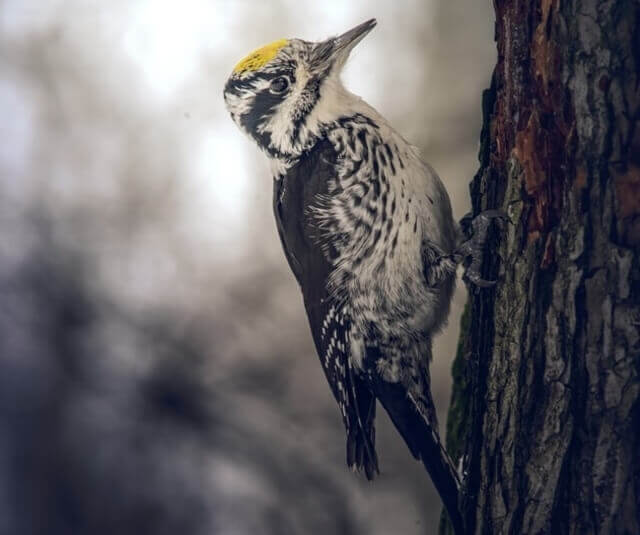
- Length: 8.3-9.1 in (21-23 cm)
- Weight: 1.6-2.4 oz. (44.8-67.9 g)
- Wingspan: 14.6-15.3 in (37-39 cm)
- Scientific Name: Picoides dorsalis
- Frequency of Occurrence: 0.0001%
- Where To Find Them: In Pennsylvania, they are found in the Allegheny Plateau, the Ridge and Valley Province, and the Appalachian Mountains.
- How to Attract: If you want to try and attract American Three-toed Woodpeckers to your yard, here are some tips to help you out. Ensure that the birds have a water source. This could be in the form of a bird bath or a small pond. Offer a variety of food options for the birds, including nuts, seeds, fruits, and insects. Create a habitat that resembles their natural environment by planting trees and shrubs and leaving dead logs lying around. Keep your yard clean and free of harmful chemicals.
Description: The American three-toed woodpecker is found in the forests of western North America. They live in coniferous and mixed forests, as well as riparian corridors. These woodpeckers forage on the trunks and branches of trees for insects, larvae, and sap.
They also eat fruit and nuts. American three-toed woodpeckers nest in tree cavities, often excavating their own nests. Females lay 4-7 eggs, which are incubated by both parents for about 14 days. The young birds fledge after another 16 days.
Lewis’s Woodpecker

- Length: 10.2-11.0 in (26-28 cm)
- Weight: 3.1-4.9 oz. (88-138 g)
- Wingspan: 19.3-20.5 in (49-52 cm)
- Scientific Name: Melanerpes lewis
- Frequency of Occurrence: 0.0001%
- Where To Find Them: Some specific locations you may want to check out are Hawk Mountain Sanctuary, Presque Isle State Park, and Ricketts Glen State Park. Lewis’s Woodpeckers can also be spotted in other areas of Pennsylvania, so it’s worth checking out different spots in order to see them.
- How to Attract: There are several things you can do to attract Lewis’s woodpeckers to your yard.
One way to attract these birds is to provide them with a food source. Lewis’s woodpeckers eat insects, so providing a feeder filled with suet or black oil sunflower seeds will help bring them in. You can also place a log or stump in your yard for the birds to search for insects. Another way to attract Lewis’s woodpeckers is to create a nesting site.
Description: Lewis’s Woodpecker is a common woodpecker found in western North America. The Lewis’s Woodpecker ranges from British Columbia south to Baja California and east to the Great Plains. In the east, they are found primarily in riparian habitats. In the west, they are found in a variety of habitats including coniferous forests, deciduous forests, oak woodlands, and even suburban neighborhoods.
Lewis’s Woodpeckers forage on the ground for insects and spiders. They also eat fruit and nuts. Lewis’s Woodpeckers nest in tree cavities. The female lays 3-5 eggs, which she incubates for about 2 weeks. The young birds fledge after another 2 weeks.
Related Post: Most Common Backyard Birds in Pennsylvania (Explained)
Frequently Asked Questions
How many different woodpeckers are in Pennsylvania?
The Pennsylvania woodpecker population consists of 10 different species. The most common woodpeckers in the Keystone State are the downy woodpecker, hairy woodpecker, northern flicker and red-bellied woodpecker.
Other species include the black-backed woodpecker, American three-toed Woodpecker, pileated woodpecker, yellow-bellied sapsucker, red-headed woodpecker, and Lewis’ woodpecker.
Does Pennsylvania have Red-headed Woodpeckers?
Pennsylvania does have Red-headed Woodpeckers, but they are rare with only a 0.8 percent frequency of occurrence. They inhabit the eastern hardwood and mixed oak forests of the Appalachian Mountains, where they forage for insects on trees.
What kind of woodpeckers are in eastern Pennsylvania?
Eastern Pennsylvania is home to a variety of woodpeckers. The most common ones are the downy woodpecker, hairy woodpecker, and red-headed woodpecker. These three species can be found in forests, parks, and backyards across the region.
Can you shoot a woodpecker in PA?
Pennsylvania’s residents may be wondering if they can shoot a woodpecker that is damaging their property. The answer, unfortunately, is no. Woodpeckers are protected under both federal and state law. They can only be legally killed under permits issued by the Pennsylvania Game Commission or by the U.S. Fish and Wildlife Service.
The U.S. Fish and Wildlife Service andGame Commission issues permits for the taking of woodpeckers only when there is damage being done to trees or other structures. Even then, a permit will not be issued unless all other non-lethal methods of control have been tried and failed.
Woodpeckers are an important part of our ecosystem. They help to keep trees healthy by eating insects that live in the bark. Shooting or trapping them for sport is illegal and can result in fines and imprisonment.

